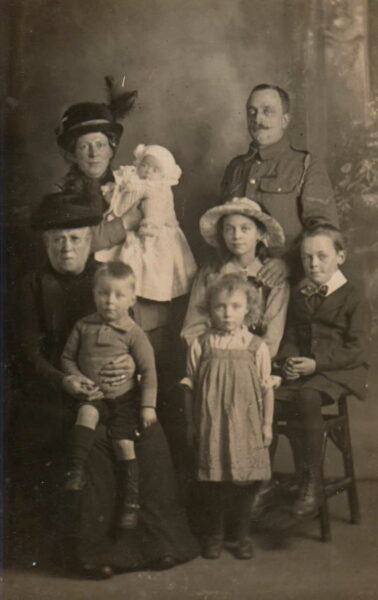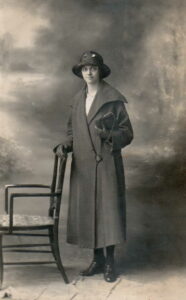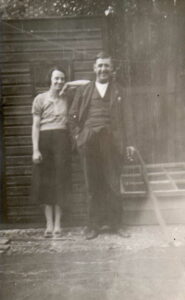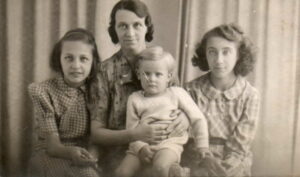My great grandfather was Sydney Joseph Rosier. He was born on December 28th 1878 in Reading, Berkshire and while still a boy of fifteen, he joined the 1st Battalion, Devonshire Regiment as a drummer. In September 1897, he was sent to the Tirah Valley in British India to fight as part of the Indian Wars. He earned an India General Service medal with clasps, and a small detachment of his battalion were mentioned in dispatches for the effectiveness of their contribution to the Mohmand Field Force during this campaign.
In 1899, still only 21, he was sent with his regiment to the Transvaal, landing in Durban, South Africa on October 5th and then on, by open train carriage, to Ladysmith, 250 km north. The battalion arrived in Ladysmith at 6pm on October 6th and joined the Gordon Highlanders, the Gloucester Regiment and the Liverpool Regiment at the garrison. On October 11th 1899, a Transvaal Boer force of 18,000 men with fourteen artillery pieces crossed the Natal frontier. The regiments in Ladysmith were tasked with improving the defences. The 1st Battalion Devonshire Regiment gained a reputation here as a hard fighting body of men.
The siege of Ladysmith lasted from November 2nd 1899 until February 27th 1900. During this campaign my great grandfather was one of the 195 wounded in his regiment, and received a serious bayonet wound to his face, blinding him in his right eye. By September 1900, he was discharged from the army, declared ‘medically unfit’ and returned home.
Many years later, his daughter, Elsie, my grandmother, told us as children that after his injury he had grown a handlebar moustache to cover the scar on his upper lip caused by the wound.

In September 1902, Sydney married Edith Maria Baker at St John the Evangelist Church in Reading, and in January 1904, my grandmother, Elsie was born, followed by Leonard in October 1908, Daisy in October 1912 and Arthur in May 1914. All four children were born at Awbery Terrace, Newtown where the family lived with Edith’s widowed mother, Maria Baker. According to the 1911 census, Sydney’s occupation at this time was a tin factory worker, which I assume would have been at Huntley, Boorne and Stevens, which was started by the younger son of Joseph Huntley, of the Huntley and Palmer biscuit empire.
Maria Baker (née Coggs), Edith’s mother, is listed in the 1871 census at the age of 24 as a domestic servant in the household of Martin Hope Sutton (son of John Sutton, founder of Suttons Seeds) at Cintra Lodge, Whitley. In 1874 she married George James Baker, but by 1881, George islisted as an inmate in the Union Workhouse, Oxford Road, Reading and Maria is living at 5 Crown Street with her parents Esther and James Coggs (James is listed as a hairdresser and Maria as a needlewoman) and her young daughter Edith Maria. Sadly, her husband, George, died in the workhouse in 1897.
For many men like Sydney, duty called again at the start of World War 1, and Sydney re-joined the army in the 4th Battalion, Royal Berkshire Territorial (Princess Charlotte of Wales) Regiment. Interestingly, being declared unfit in 1900 had no bearing on his being allowed to re-join in 1914. The medical officer wrote on his army record at the time, “He can see perfectly well with his left eye”.
According to Sydney’s WW1 pension record he transferred to the Royal Defence Corps in 1916. The Royal Defence Corps was formed in March 1916 and was initially formed by converting battalions which were composed of soldiers either too old or medically unfit for active front-line service; the Home Service status indicated they were unable to be transferred overseas. Eighteen battalions were converted in this way.
The role of the corps was to provide troops for security and guard duties inside the United Kingdom, guarding important locations such as ports or bridges. It also provided independent companies for guarding prisoner of war camps. The corps was never intended to be employed on overseas service.
By 1914 Sydney was listed in Kelly’s directory as living at 8 St John’s Street, Reading, which is the address of The Retreat public house. In fact, Sydney and Edith were landlord and landlady of The Retreat from 1911 to 1923.
By the end of WW1, one more boy, Douglas, had been born and Sydney returned to his family for good.

Life, of course, was very different in many ways for most families after the war had ended and he was fortunate to return to his wife and children. Life carried on for Sydney and Edith, bringing up five children in post-war Reading, and although both working as ‘publicans’, Sydney carried on working at the tin factory. The family moved to a bigger family home at 83 Albert Road, Newtown in the early 1920s, and he worked up to the factory’s foreman position. Albert Road was one of the Newtown streets that was demolished for redevelopment in the 1970s.
My grandmother, Elsie Edith Rosier, grew up there, then met, and in March 1927 married, Baden Powell Whitehouse, a sailor from the West Midlands.

Elsie and Baden moved to their own home at 47 Radstock Road in Newtown and when Sydney died in 1934 at the age of 56, his widow, Edith, moved into Elsie’s home where she lived until she died in 1961.

Elsie and Baden had three children: two girls, Rita, born April 1930, my mum, Enid, born May 1932, and Baden junior, born June 1941. By the start of WW2, my grandad, Baden, had re-joined the Royal Navy as a reserve, and life carried on. My mum talked of soldiers lodging at the house, and evacuees staying during the war. I remember my grandmother maintaining a relationship with one of the evacuees, Bridie, up until she was very old. My mum also told a story of during the war, walking across Palmer Park with her sister Rita, on their way home from Alfred Sutton School, and hearing the air-raid siren which meant they had to run home quickly. The People’s Pantry in Reading town centre was bombed at 4.35pm that very afternoon – February 10th 1943.
My grandad returned safely from WW2 and my grandparents lived happily into their old age. Baden died in 1974, and Elsie died in 1991 at the age of 87, by which time she had seven grandchildren and six great grandchildren.
